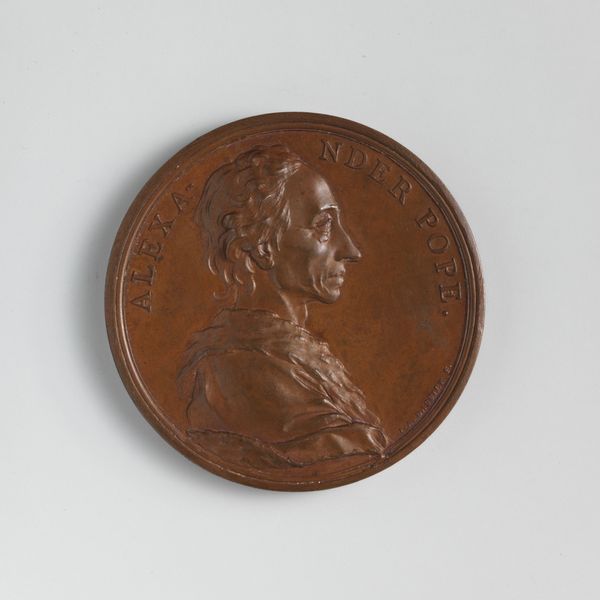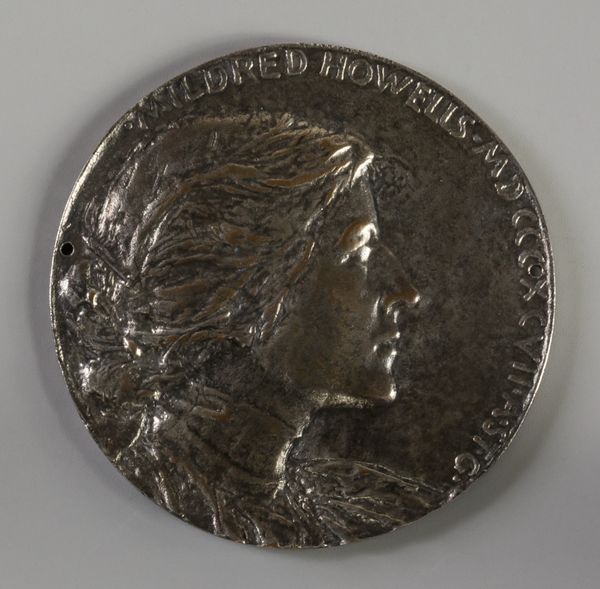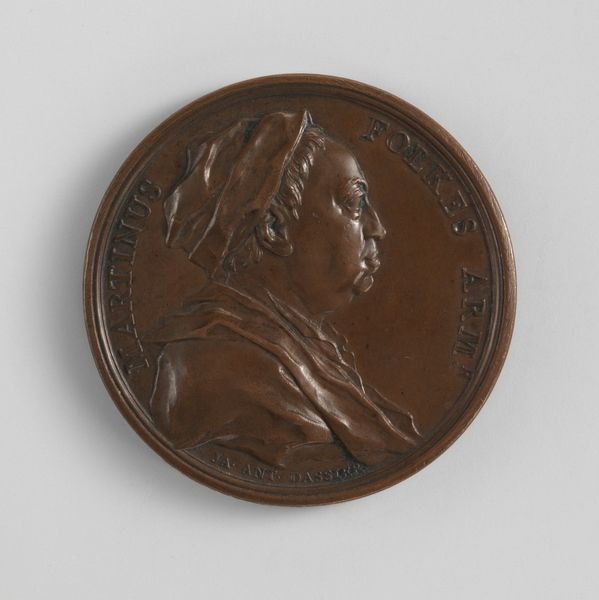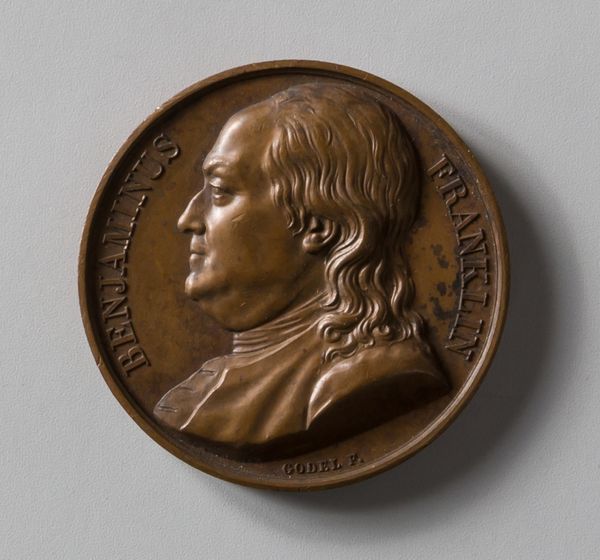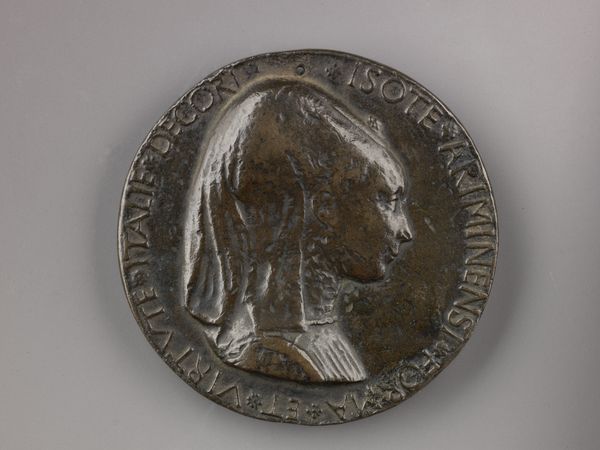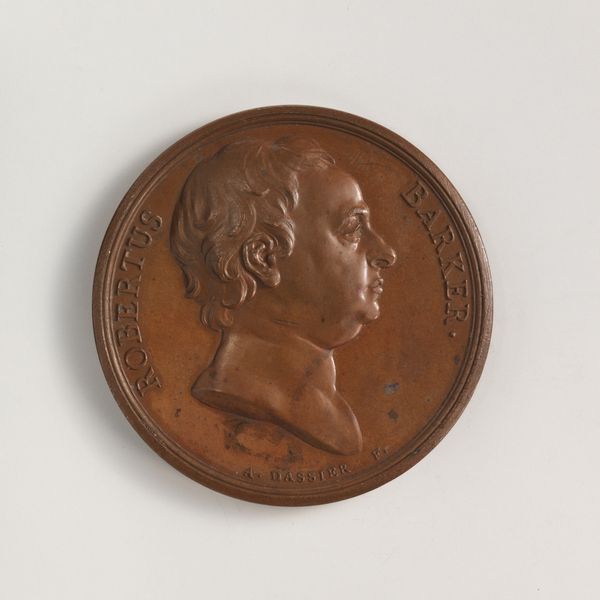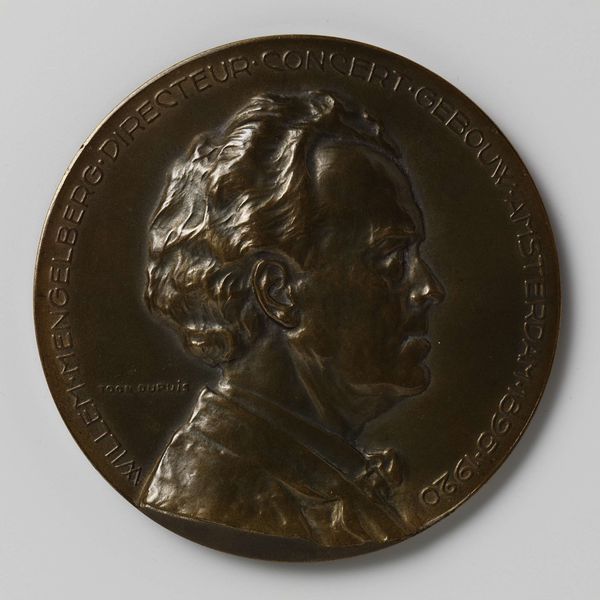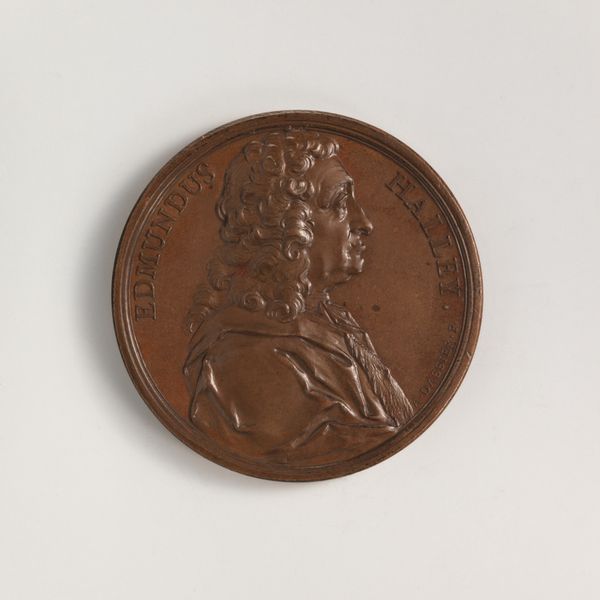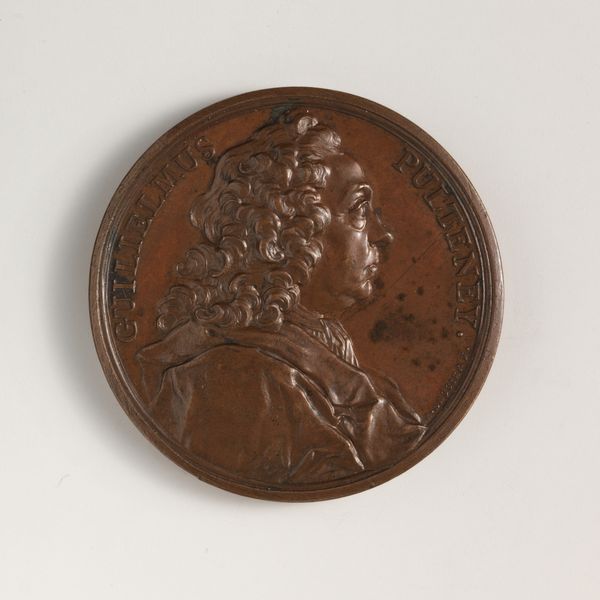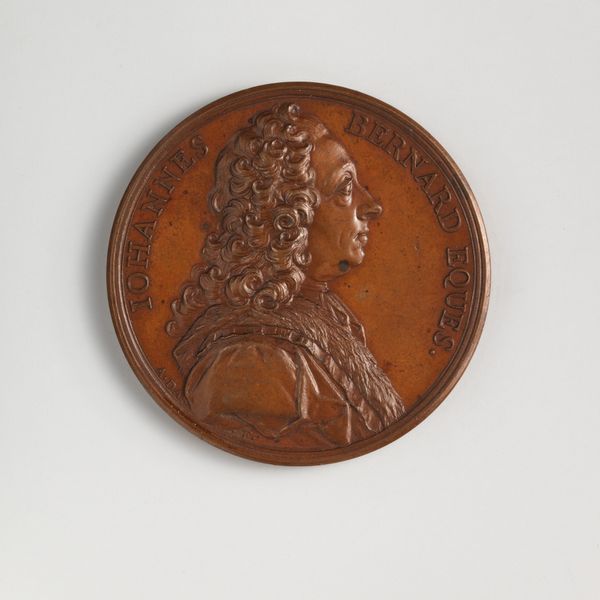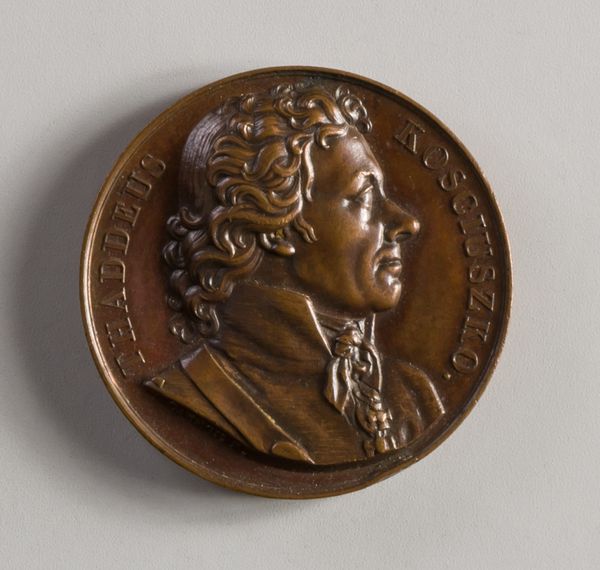
relief, bronze, sculpture
#
portrait
#
medal
#
sculpture
#
relief
#
bronze
#
sculpture
#
ceramic
#
decorative-art
#
italian-renaissance
Dimensions: Diameter: 59 mm
Copyright: Public Domain
Curator: Immediately, there's this captivating gravity to the piece, like staring into history condensed into a small circle. It feels incredibly intimate. Editor: This is "John Kendal," a bronze relief portrait created around 1480 by Niccolò Fiorentino. You can currently find it at the Metropolitan Museum of Art. These portrait medals were incredibly fashionable among elites during the Italian Renaissance. Curator: Fashionable portrait medals! What a great way to encapsulate yourself—not through paint, but durable metal! I bet this shiny, pocket-sized version of John felt rather powerful. Editor: Exactly! Think about how these medals functioned within a network of social and political exchanges. Giving and receiving them became a performative act that solidified connections, demonstrated loyalty, and, importantly, communicated status. It’s an early form of public relations, if you will. Curator: PR! It gives new meaning to the expression, "heads or tails". Is it all that different from today’s obsession with being "influential"? Perhaps we simply exchange NFTs instead of shiny bronzes. Editor: In some ways, perhaps not so different. It does make you consider the enduring human need for recognition. But in this era, you're not just capturing likeness. Florentino's intricate relief transforms Kendal into something near iconic through artistic embellishments. Curator: Iconography of power cast in bronze... but still, there's something strangely touching. A fragility almost... maybe it is just me feeling some humanity. The details in his hair and around the eye capture something beyond "officialdom", wouldn't you say? Editor: Absolutely. And despite the formal nature, artists like Fiorentino also personalized these objects by referencing classical prototypes, adding a touch of erudition that resonated with the learned circles of the time. The portrait exists at this really fascinating nexus of the individual, society, and the enduring influence of the antique. Curator: You know, reflecting on the portrait's intent versus its tangible reality has given me a newfound appreciation for how art translates societal aspirations. It’s as though John Kendal aimed for immortality and, quite literally, has achieved a version of that aim! Editor: Indeed, it’s a physical manifestation of memory, made enduring. Perhaps that’s what still draws us in so many centuries later.
Comments
No comments
Be the first to comment and join the conversation on the ultimate creative platform.

